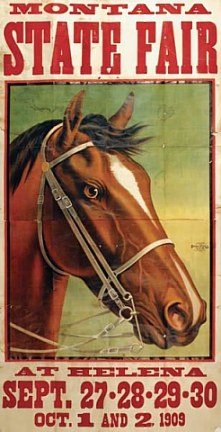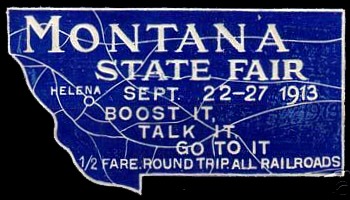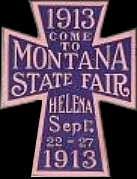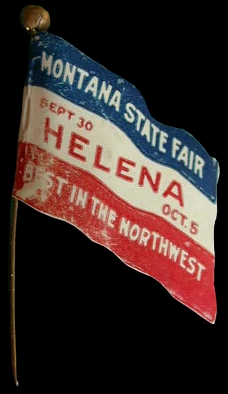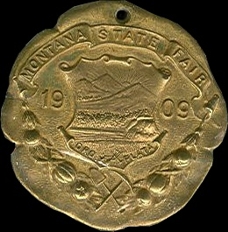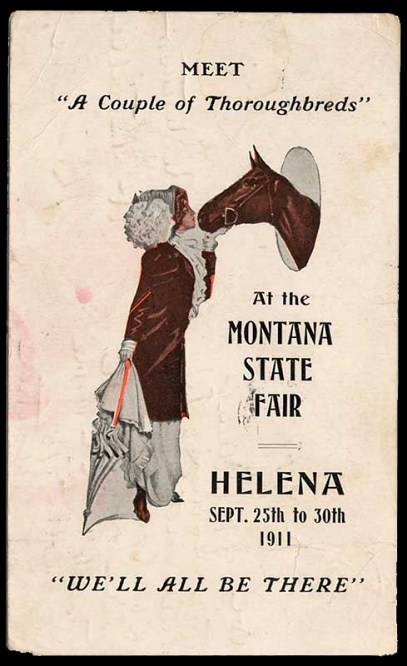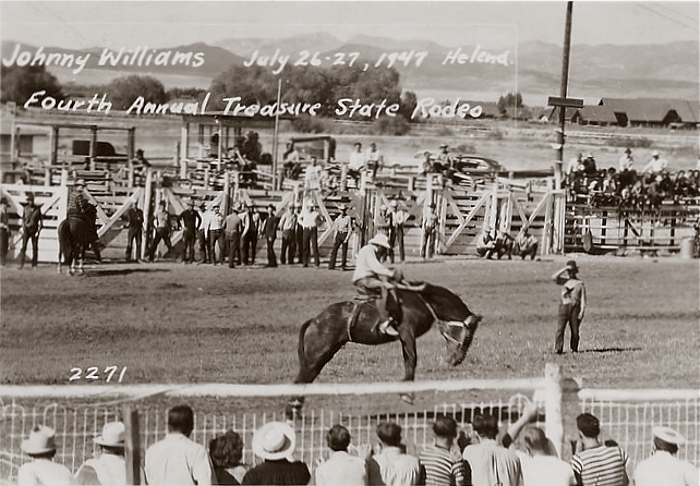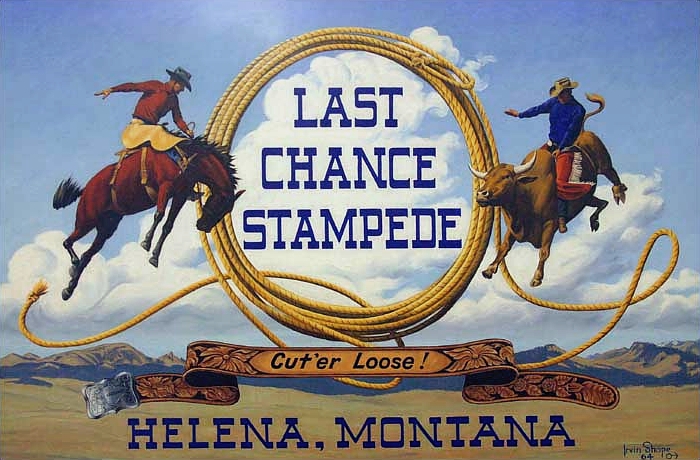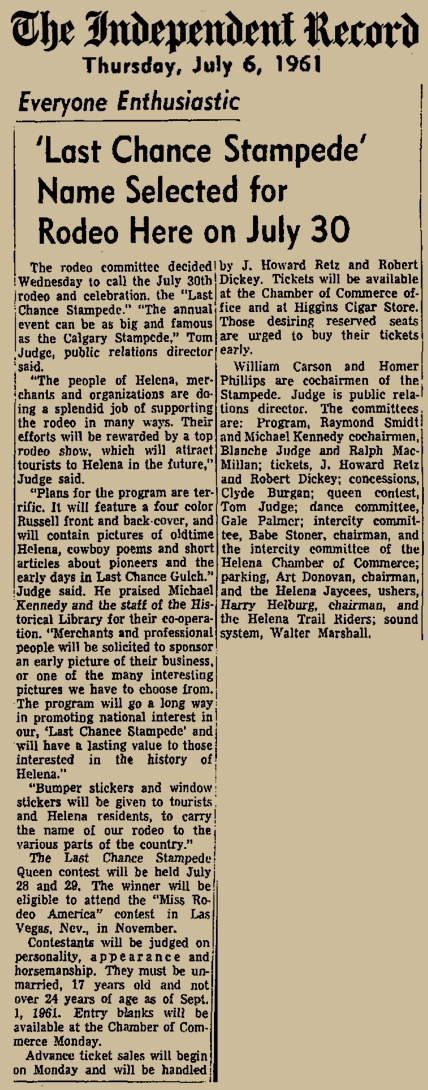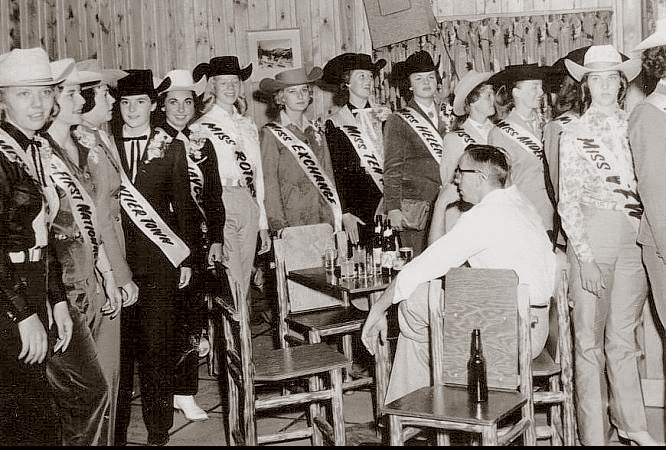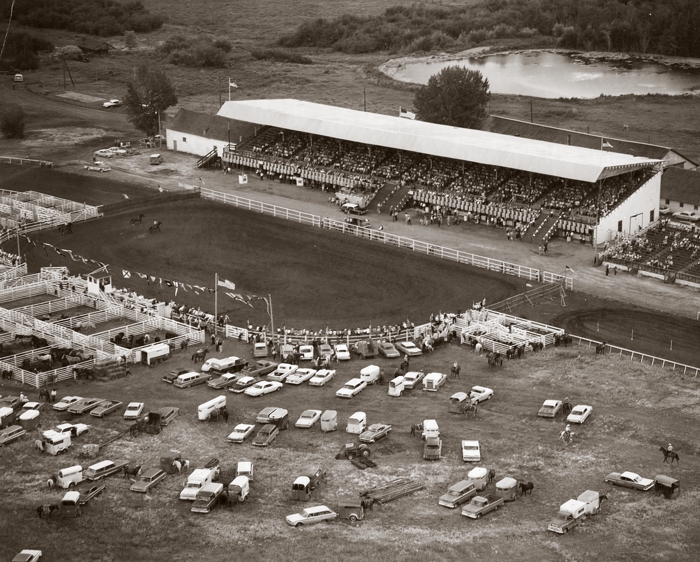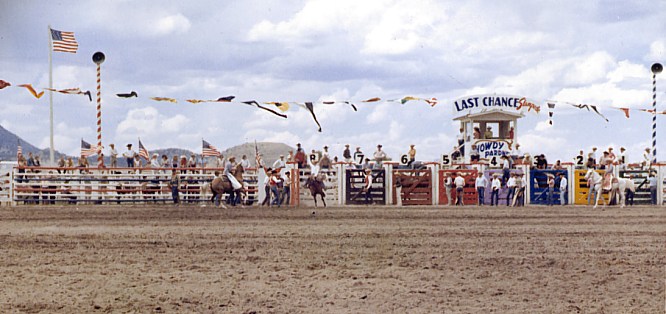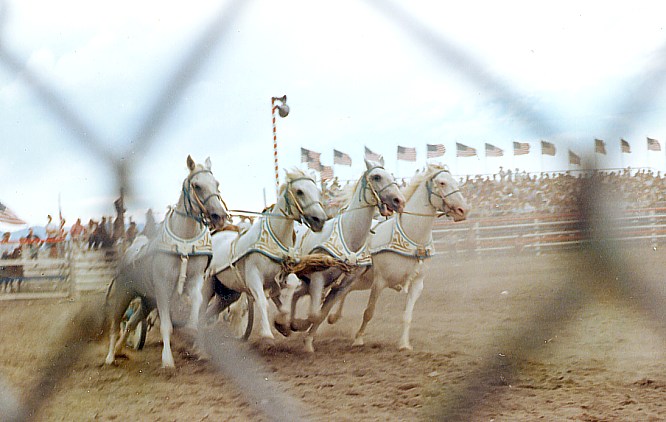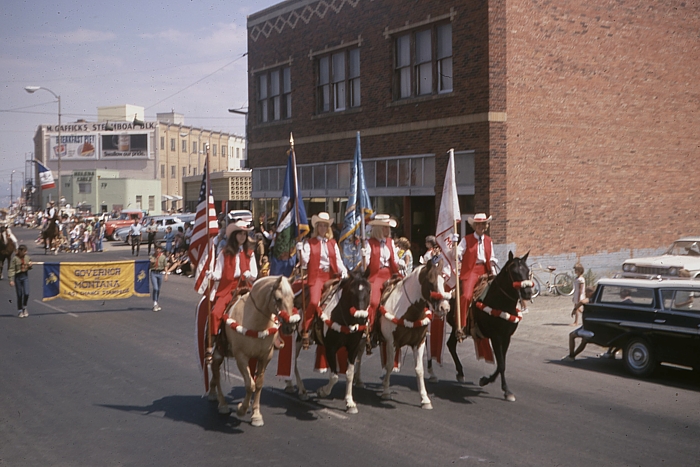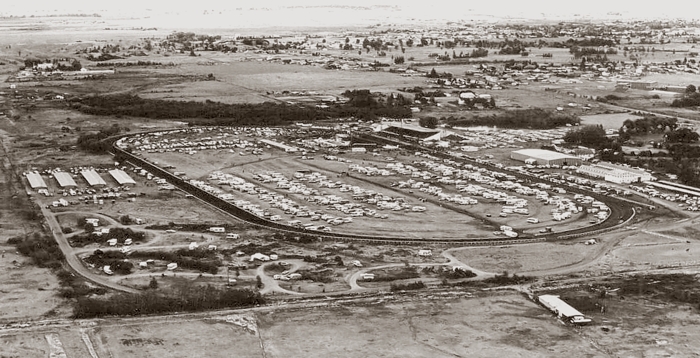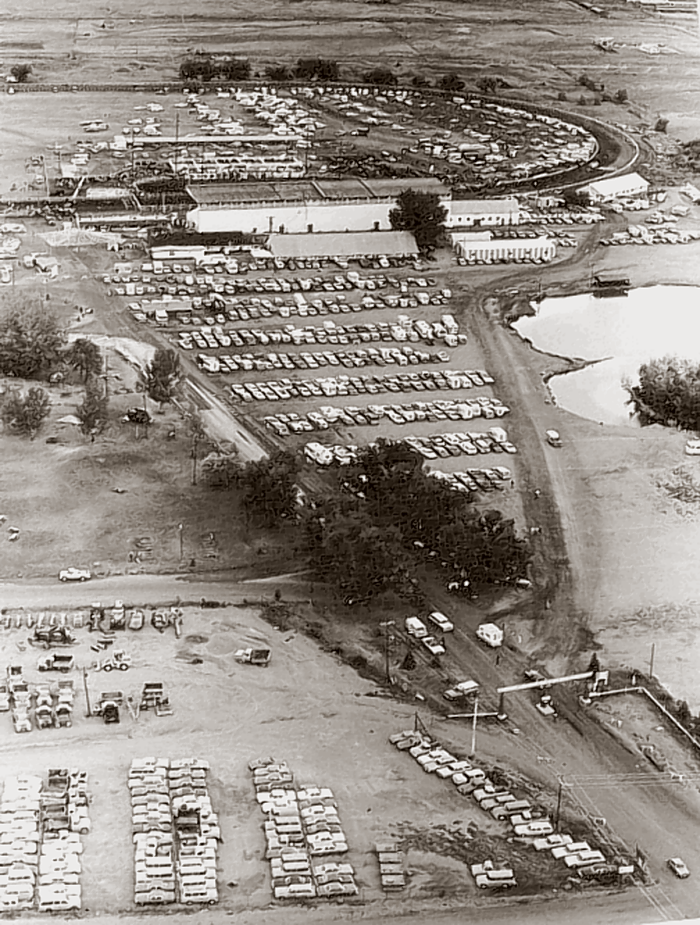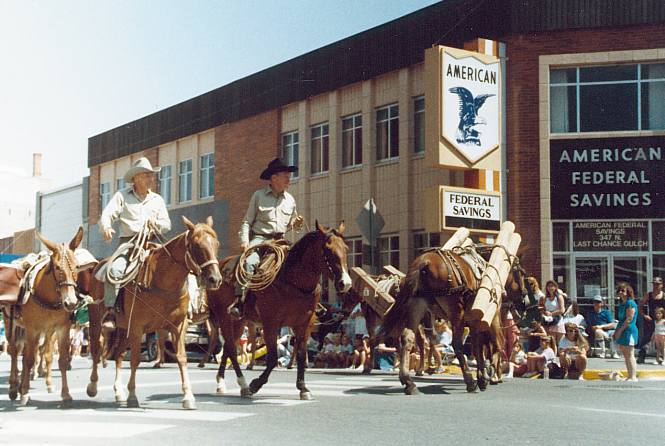
Home
of the Montana Territorial and State Fairs 1870-1932
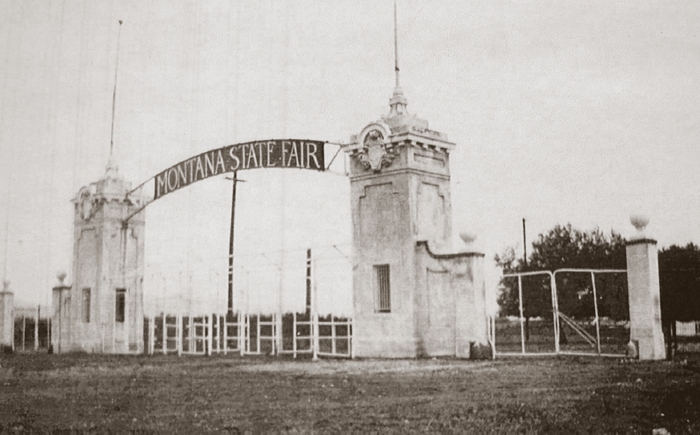
On the
Map...
46°37'7.51"N
112° 3'19.41"
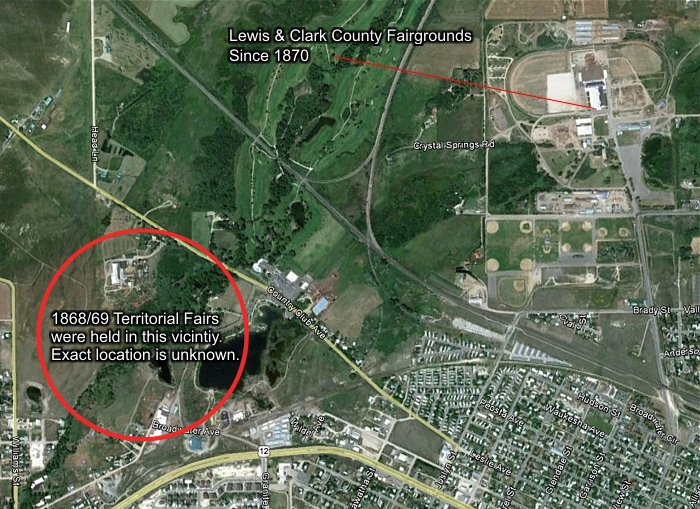
1868
& 1869 Territorial Fairs Held Near What is Now Spring Meadow Lake
No Trace of the Old Resort or Track Has Been Found
|
Helena's
first racetrack, the "Fashion Course", was laid out
in 1868, and was located close to where the Green Meadow Country
Club and Spring Meadow Lake are today, about a mile and a half
southwest of the current fairgrounds.
The Fashion
Course was part of a small resort on the banks of Ten Mile Creek
operated by a Mrs. Coady (aka Cody). It was first named Two
Mile House, being two miles from Helena, then later named Ten
Mile House. It was on Coady's site that the first and second
Montana Territorial Fairs were held in 1868 and 1869. No trace
of the track or the Two Mile House resort have been found, and
its exact location is unknown. A May 20 1872 story in the Helena
Herald places Coady's upstream from the Ten Mile crossing on
what is now Country Club Avenue.
1868
Helena City Directory Ad for the Two Mile House & Racetrack
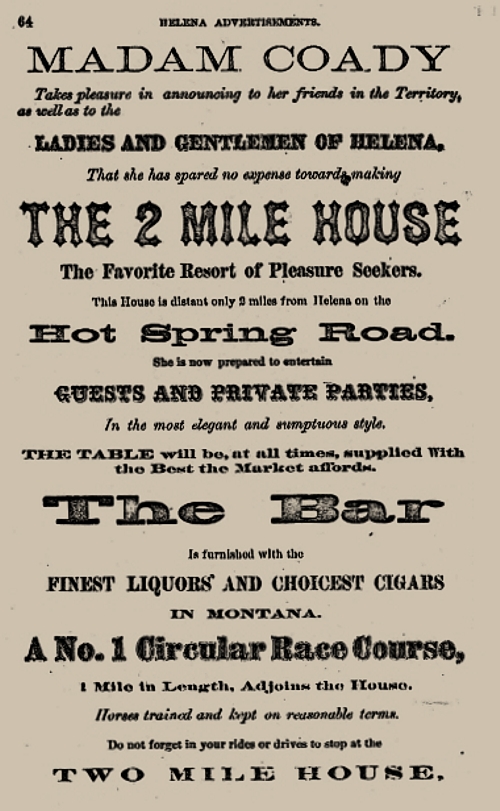
COURTESY
OF ELLEN
BAUMLER
|
The First
Territorial Fair Recounted in the Virginia City, M. T. Post
Click on Image to Open a Big Version
in a New Window
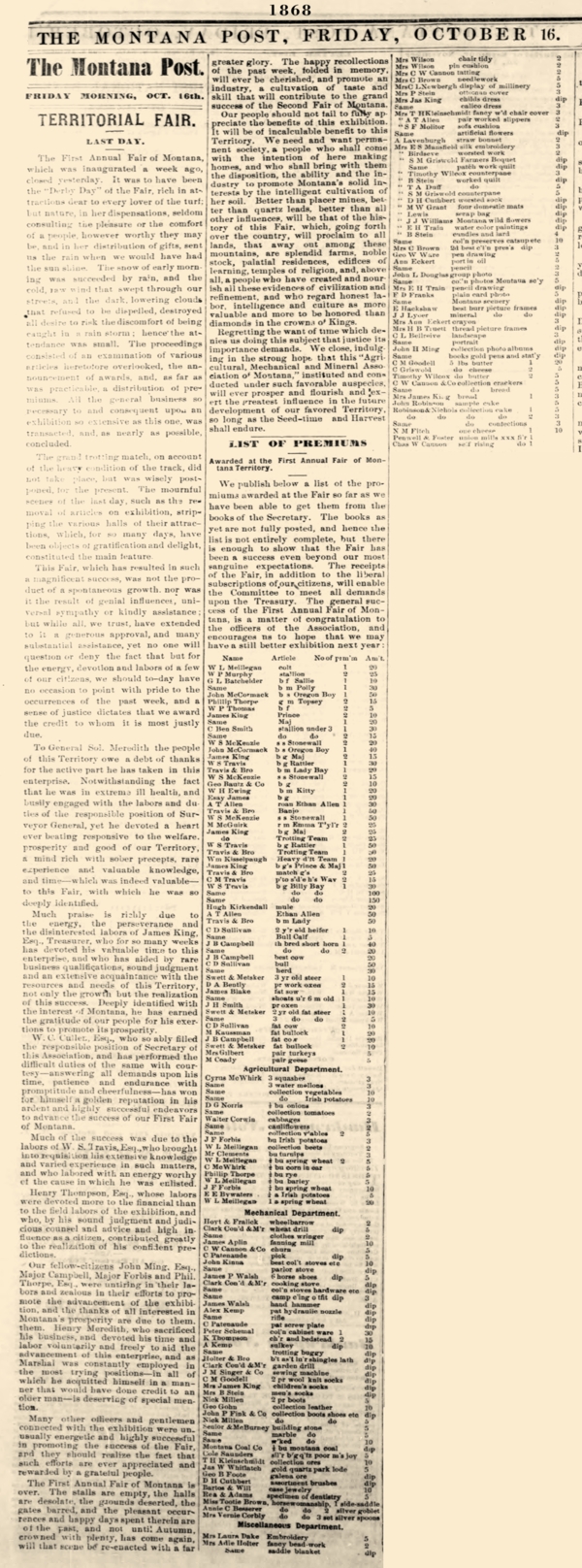
LIBRARY
OF CONGRESS
Establishment
of the Fairgrounds, 1870
|
Horseracing
proved popular, and in 1870 a private consortium purchased the
current fairgrounds site, and began building the track and other
facilities.
The fairgrounds
was the site of the Montana Territorial Fair beginning in 1870,
and of the first Montana State Fair in 1903.
On September
30 1911, aviation history was made at the fairgrounds when young
Cromwell Dixon became the first person to fly across the Continental
Divide, taking off from the fairgrounds, landing at Blossberg
some 17 miles to the west, and returning.
Fair attendance
declined during the hard economic times of the 1920s, and the
last exhibition of any size was held there in 1932. By 1933
the facility was abandoned, and its buildings were allowed to
decay.
In 1958,
volunteers organized to repair the facility, and in 1961 the
"Last Chance Stampede" was formed. In 1990, a fair
was reinstituted, and the grounds were once again established
as a center for community activities.
However,
lack of maintenance funds continued to plague the problematic
facility over the years. The original grandstand was condemned
and torn down in 1999, and metal-framed stadium seating was
put in place.
A variety
of events are currently held at the fairgrounds, including the
Last Chance Stampede and the Lewis and Clark County Fair.
VISiT
THE FAIRGROUNDS WEBSITE
|

Download a Detailed History of the Fairgrounds, by the
Helena/Lewis and Clark County Historic Preservation Commission
| Click on
the two PDF links below for a lengthy and fascinating history
of the Lewis and Clark County Fairgrounds. Part One is an historical
summation, Part Two contains numerous maps, aerial views and photographs.
NOTE: Part Two is a very large, graphics-heavy file, so allow
time for the complete download. |
Courtesy
of Paul Putz
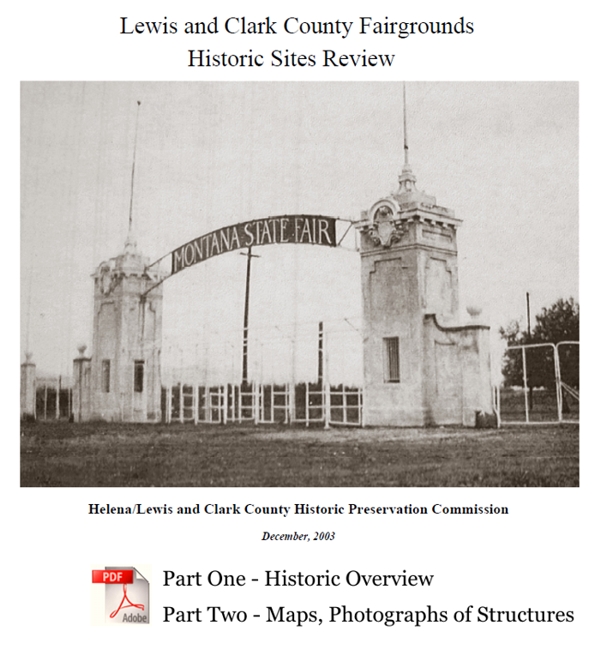

Behind
the Grandstand, circa 1915
Model Farm Irrigated by Electricity
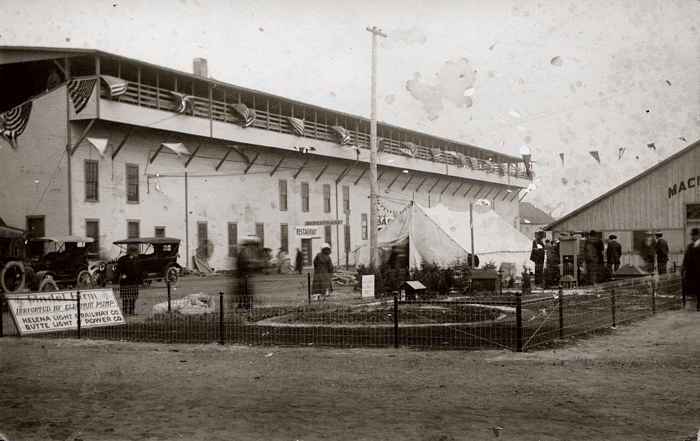
COURTESY
OF SEAN LOGAN • CLICK ON IMAGE FOR A BIG
VIEW IN A NEW WINDOW
| View of a
"Model Farm irrigated by electric pump", set up near
the Machinery Pavillion just south of the grandstand. The display
was sponsored, not surprisingly, by the Helena Light & Railway
Co., and Butte Light & Power Co. Available online newspaper
archives reveal nothing more about the Model Farm. Thanks to Helena
historian Sean Logan for sharing this wonderful photograph! |
Montana
State Fair Agricultural Exhibits, Early 1900s
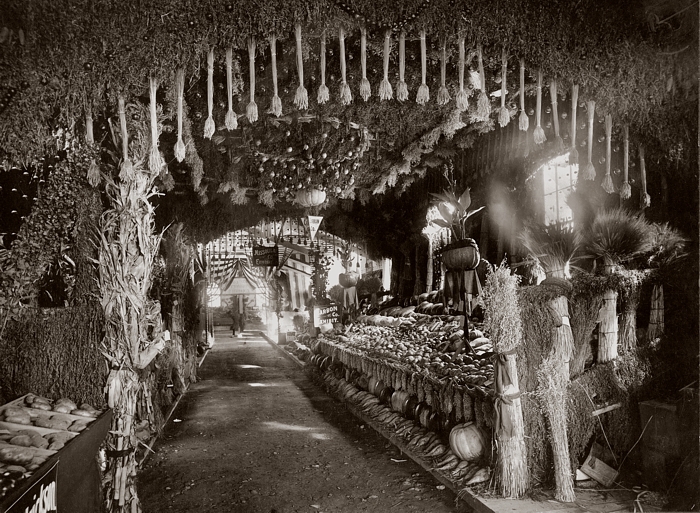
CULBERTSON
PHOTO COURTESY OF THE DAVID POOR COLLECTION
CLICK ON IMAGE TO OPEN A BIG VERSION IN A NEW
WINDOW
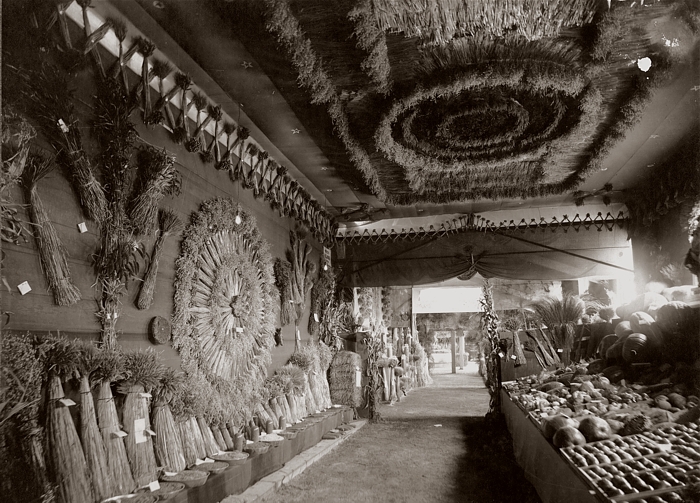
CULBERTSON
PHOTO COURTESY OF THE DAVID POOR COLLECTION
CLICK ON IMAGE TO OPEN A BIG VERSION IN A NEW
WINDOW
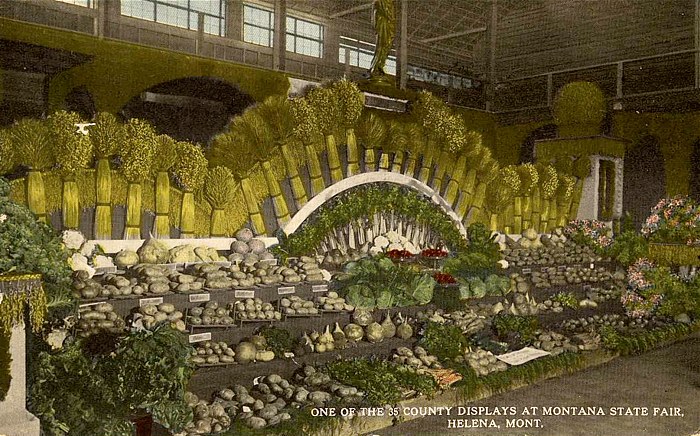
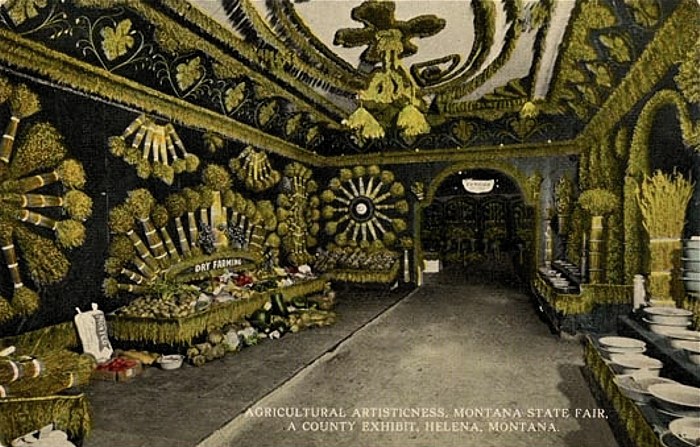
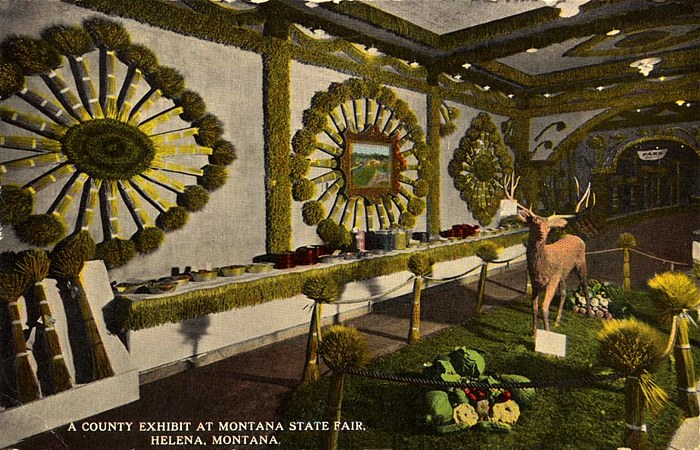
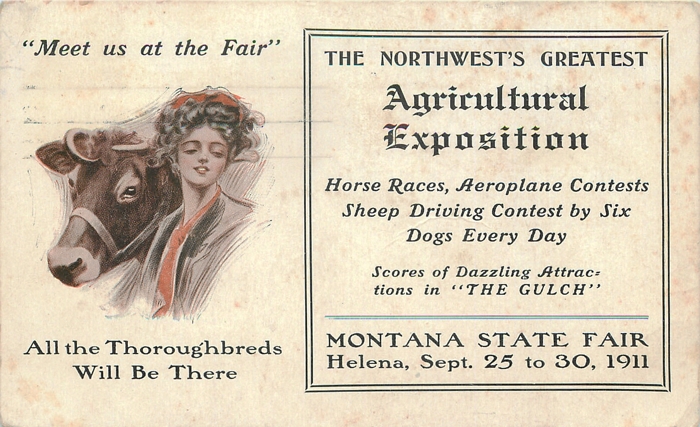
COURTESY
OF THE DAVID POOR COLLECTION
Cromwell
Dixon
First
Flight Over the Continental Divide, 1911
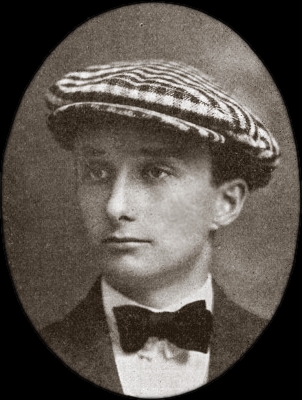
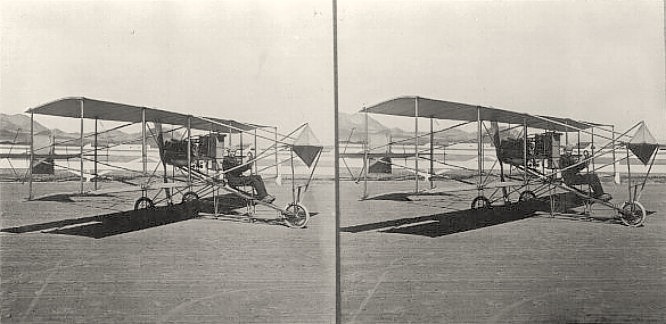
|
Stereoview
of Cromwell Dixon and his airplane at the Montana State Fairgounds,
September 30, 1911. Dixon was a nineteen year old aviator from
Columbus, Ohio. On September 30, he became the first pilot to
fly across the Continental Divide. The young pilot took off
from the fairgrounds at Helena and landed thirty-four minutes
later in a field near Blossberg, some 17 miles to the west.
Dixon wired the officals at the fairgrounds that he had landed
safely, refueled his bamboo and fabric aircraft, and lifted
off for his return flight to Helena.
Strong
tail winds aided his return; and after circling the fairgrounds
twice, he landed safely. Governor Edwin Norris proclaimed Dixon
"The World's Greatest Aviator" and presented him a
check for $10,000. Dixon died just two days later when his plane
crashed in Spokane, Washington.
For
more about Cromwell Dixon and his historic flight, please go
here.
|
Looking East, 1913
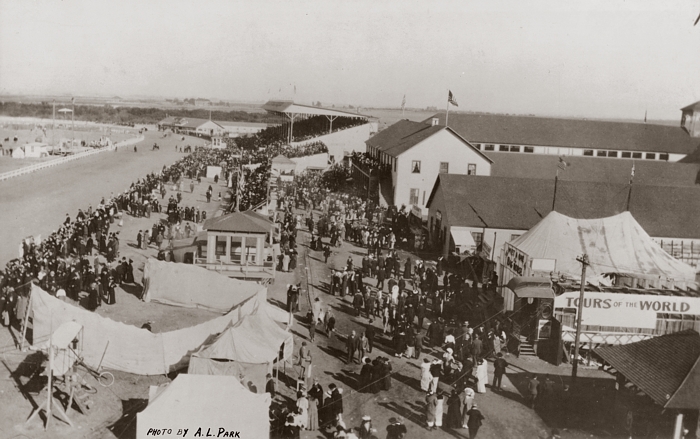
COURTESY
OF THE DAVID POOR COLLECTION • CLICK ON
IMAGE TO OPEN A BIG VERSION IN A NEW WINDOW
At the
1915 Fair, Ralph B. Adams Demonstrated the
First Wireless Radio Used by U. S. Forest Service Lookouts
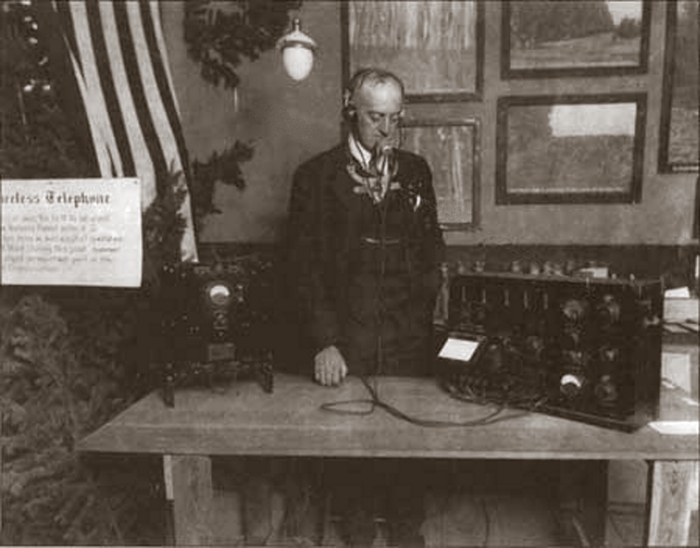
Elephants
at the Fairgrounds, date unknown
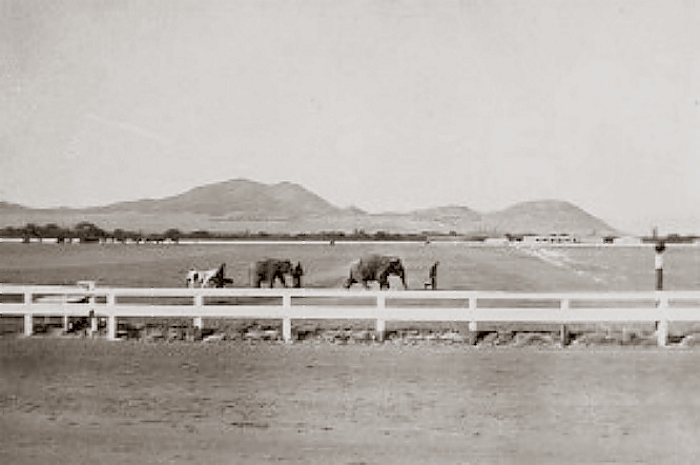
Charles A. Lindbergh at the Fairgrounds, Sept. 6 1927
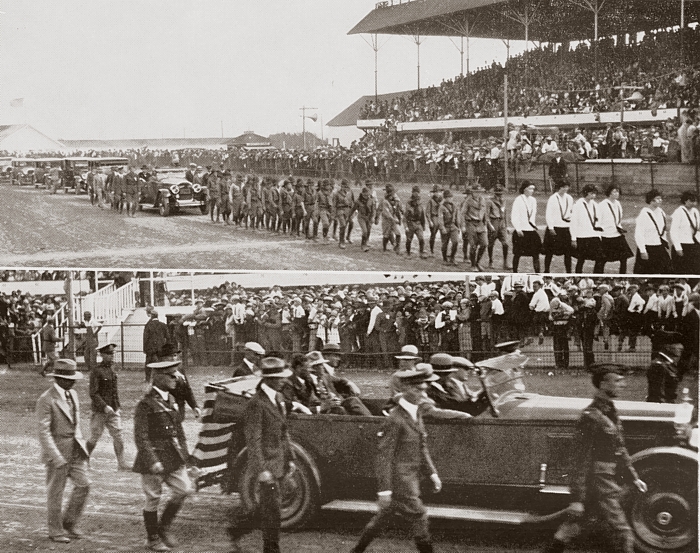

Historic
1870 Racetrack
Listed in the National Register of Historic Places
1887
Map of the Fairgounds Area
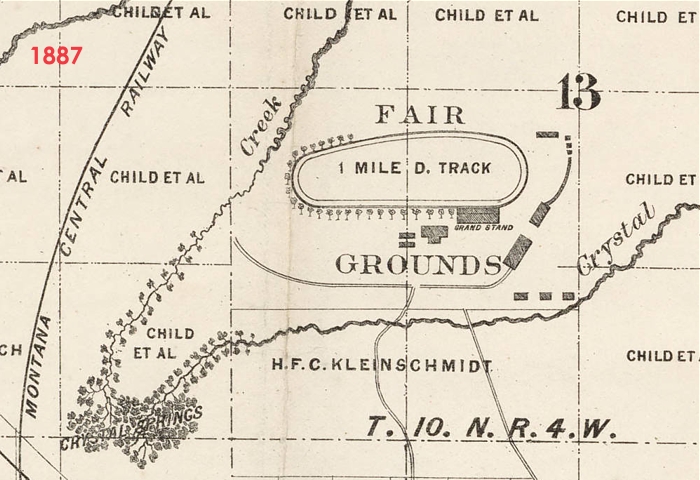
MONTANA
MEMORY PROJECT
1895
Topographic Map of the Fairgounds Area
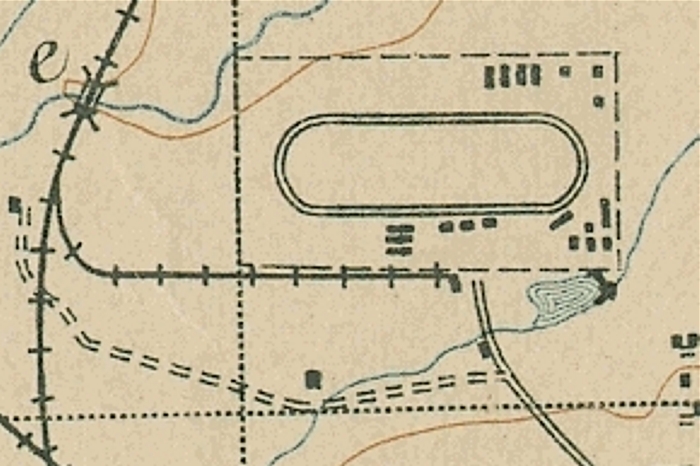
|
From the racetrack's 2006 Nation Register of Historic Places
registration form, by Ellen Baumler...
"Constructed
in 1870, the historic racetrack at the Montana State Fairgrounds
constitutes a significant link to the proud history of horseracing
in the city of Helena, and throughout the state of Montana.
One
of the earliest regulation tracks to be built, the resource
has a long and important history as the center of recreational
racing in the area. As the location of the first organized and
regulation races in the state, the fairgrounds track is the
place where the colorful and important history of Montana horseracing
got its start.
Throughout
the late 1800s, Helena's track was intrinsic to the state's
racing circuit, where breeders, horses and jockeys influenced
the national racing scene. Throughout the years, and especially
during the State Fair's heydays between 1870 and 1932, racing
at the track was attractive to elite thoroughbred aficionados
as well as standardbred enthusiasts."
THE
ENTIRE .DOC NRHP REGISTRATION FORM, WHICH INCLUDES A DETAILED
HISTORY OF THE TRACK AND NUMEROUS PHOTOS, MAY BE DOWNLOADED
BY RIGHT-CLICKING HERE.
|
Montana
State Fairgrounds, 1910. Trotters at the finish line
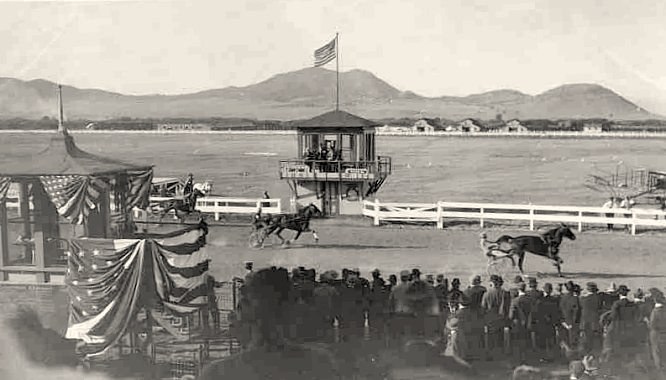
|
Excerpts
from the racetrack's 2006 Nation Register of Historic Places
registration form, by Ellen Baumler...
"By
the 1890s, races at the Helena fairs were big business, attracting
owners and horses from Deer Lodge; Great Falls; Butte; Toston;
Helena; Spokane Falls, Washington; and Denver, Colorado. At
the First State Fair in 1890 (although still there was no state
involvement), the Denver Trotting Stables had numerous entries.
The Denver horses and other jockeys and horses that had been
at races at Butte, some 100 in all, arrived with some fanfare
on special Montana Central cars built for transporting racehorses.
An aggregate purse of $15,000 and mutual and other kinds of
betting were incentives for numerous entries in 1890."
"Automobile
racing began in 1914 and gained popularity in 1915. An automobile
track was constructed within the racetrack in 1916, but horse
racing-despite the abolishment of betting-was still a popular
facet of the state fair through the 1920s. It waned as the decade
passed the mid-mark and again gained momentum in 1927. Carloads
of thoroughbreds arrived via the Northern Pacific and the Great
Northern and racing enthusiasts hung on the fence around the
track, watching the horses' daily workouts."
"In
1930, horse racing was again the most important attraction and
betting had resumed. Seven races daily for six days made a rigorous
program. In July, horses, jockeys and trainers began to gather
for the fair, August 18-23. By the 21st of July, 'more than
250 horses from the best circuits in Canada, Mexico, and the
United States' were stabled at the fairgrounds with 100 more
horses due to arrive. The races promised generous purses and
the pari-mutuel machine system of betting 'added zest' to the
finish line. In this system, a machine registers bets as they
are placed and calculates and posts changing odds and final
payoffs, making races even more exciting. Nearly 25,000 people
attended the fair.
"In 1931, again horse racing was an important part of the
program. The Lewis and Clark Racing Association held a "race
meeting" at the fairgrounds for six days in early August
of 1931 under the new pari-mutuel machine system. 31 The fair
then opened ten days later. Six days of races during the fair
included purses of more than $13,500. 32 The state fair, however,
last held in 1932, lapsed during the depression. In 1933, the
depression forced cancellation of the Montana State Fair at
Helena. Most people simply could not afford the price of admission."
|
1938
Aerial View of the Track
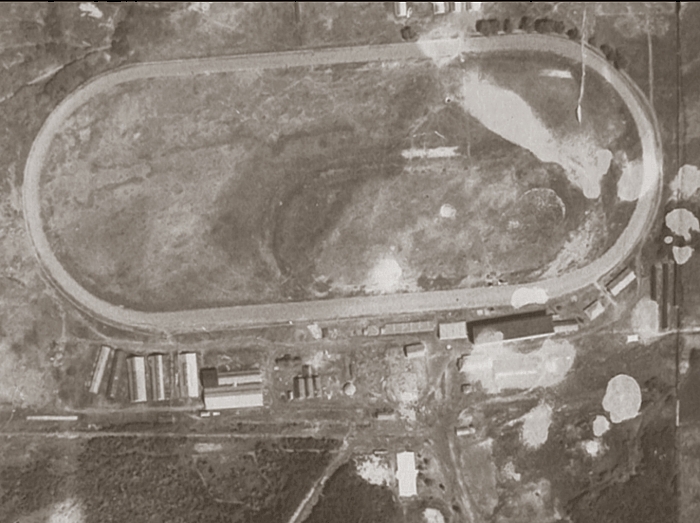
FROM
THE LEWIS & CLARK COUNTY FAIRGROUNDS HISTORIC SITES REVIEW
HELENA/LEWIS & CLARK COUNTY HISTORIC PRESERVATION COMMISSION
| The faint
outline of a 1916 half-mile automobile racing track can be seen
in the infield of the horse track. |
1955
Aerial View of the Track
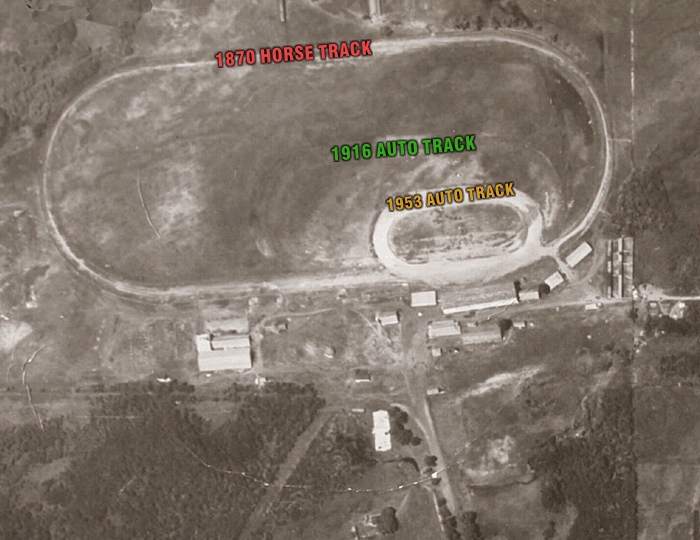
FROM
THE LEWIS & CLARK COUNTY FAIRGROUNDS HISTORIC SITES REVIEW
HELENA/LEWIS & CLARK COUNTY HISTORIC PRESERVATION COMMISSION
| In the summer
of 1953, the Capital City Racing Association built a quarter-mile
stock car track inside the 1916 auto track. It was in use until
at least 1956, when Valley
Speedway opened. |
Stock
Car Crash at the Fairgrounds, 1950s
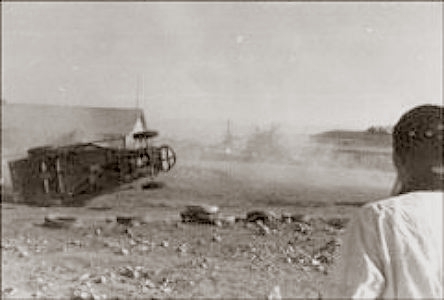
Fairgrounds
Renovation Started in 1958
|
From the
racetrack's 2006 Nation Register of Historic Places registration
form, by Ellen Baumler...
"In
1958, Bill Carson organized concerned citizens to begin renovation
of the fairgrounds. A county-supported board of directors formed
and many volunteers repaired the dilapidated property. With
the first Last Chance Stampede in 1961, horseracing returned
to the fairgrounds and the track continued in use until the
last race in 1998."
|
Derelict
Helena Downs Starting Gate
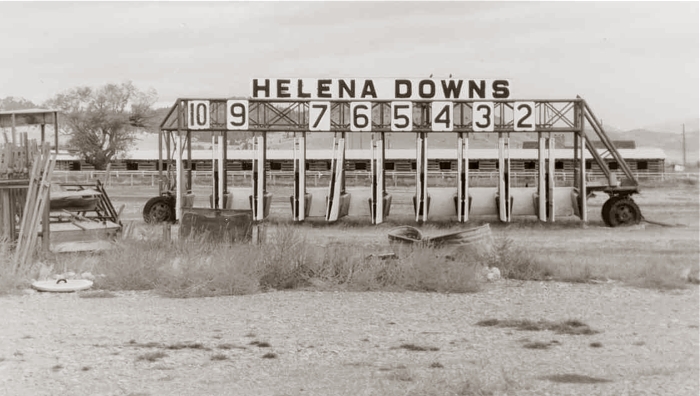
PHOTO
COURTESY OF ELLEN BAUMLER
Short
Video Clip of a 1972 Race
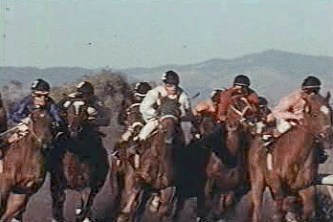
|
•
V I D E O •
CLICK ON THE IMAGE TO DOWNLOAD
|
|
A very short
video clip of horses running at the Fairgrounds track in 1972.
Taken from the 1973 Helena Chamber of Commerce promotional film
"Helena - City of Gold".
|
COURTESY
OF KITTY ANN QUIGLEY TAALER
Incremental
Degradation of the Track
1995
Aerial View of the Track
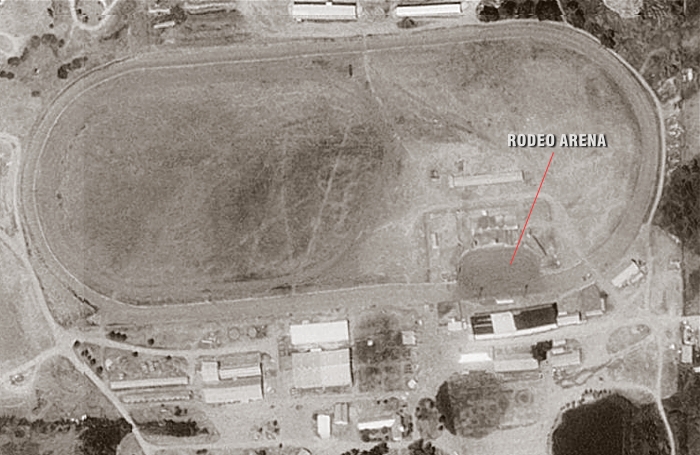
|
From the
racetrack's 2006 Nation Register of Historic Places registration
form, by Ellen Baumler...
"In
1999, temporary, metal-framed stadium seating was introduced
in lieu of the original grandstands [demolished
in 1999].
In 2005, a small portion of the track, approximately one-eighth
of the surface, just east of the homestretch and west of the
first turn, was blocked off by metal-framed stands. In order
to create a rodeo arena, the track surface was turned, and a
section of the infield was denuded of grass."
|
The
Blocked-off Homestretch, Stadium Seating and Rodeo Arena, 2006
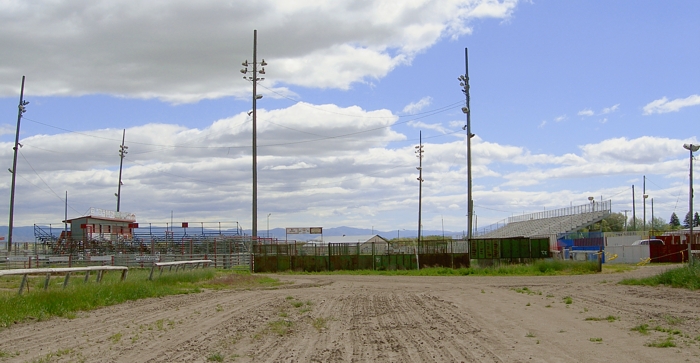
PHOTO
COURTESY OF ELLEN BAUMLER • CLICK ON IMAGE
TO OPEN A BIG VERSION IN A NEW WINDOW
Huge
County Facilty Built in Track Infield, 2008
Legal Action Unable to Prevent
|
In 2006,
a group of historic preservationists and horseracing enthusiasts,
allied as the Save the Track Foundation, filed
injunctions against and eventually sued Lewis & Clark
County over its plans to construct a huge exhibtion hall and
grandstand facility in the infield of the historic track. The
Foundation claimed that the County had bamboozled voters during
a 2006 levy election by announcing only after the election that
the site of the facility would be in the track infield.
In March
of 2008, State District Judge Thomas Honzel found
in favor of the County.
|
Recent
Photos of the Track and County Facility
2011
Google Maps Satellite Views
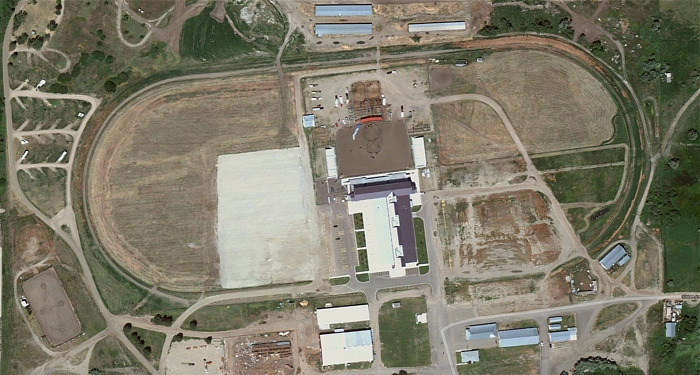
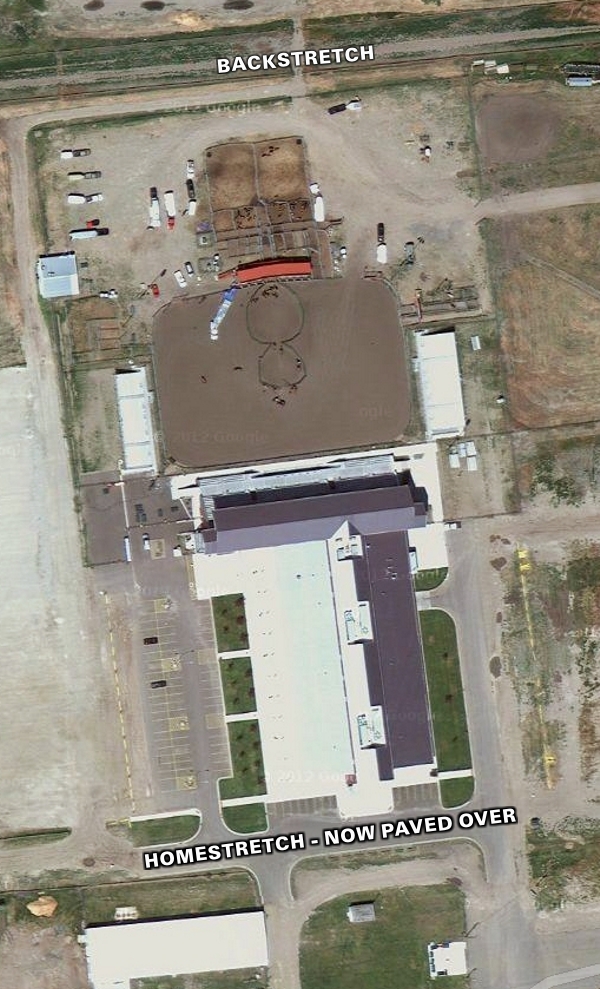
| The new metal
exhibit hall, grandstands, and rodeo arena now sit in the center
of the historic site. Consequently, the central south portion
of the track has been removed to accommodate parking. |
Views
of the New Facility, June 2012
Photos Courtesy of Ellen Baumler
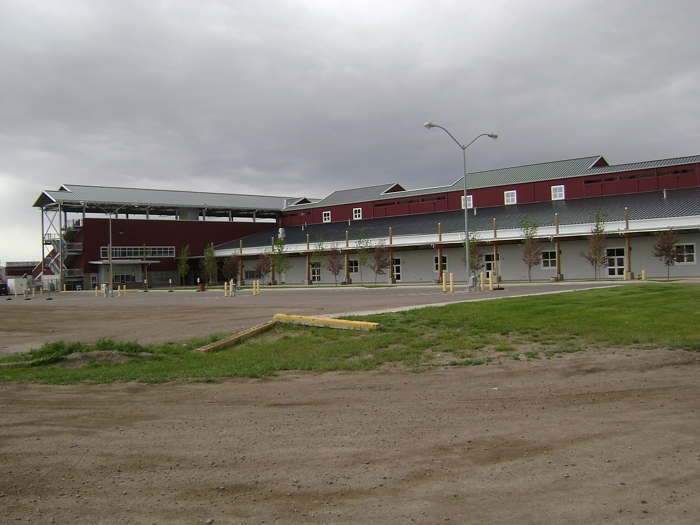
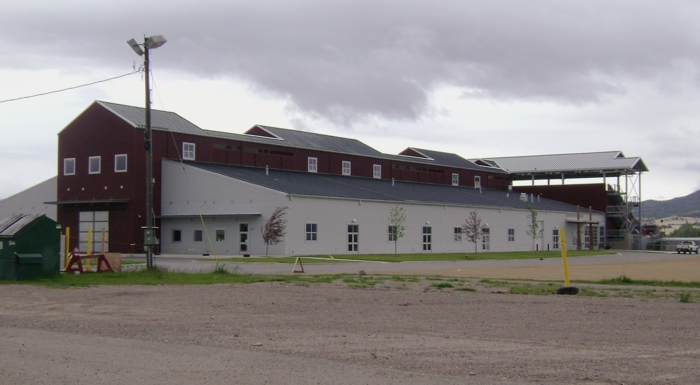
Looking West from the First Turn, June 2012
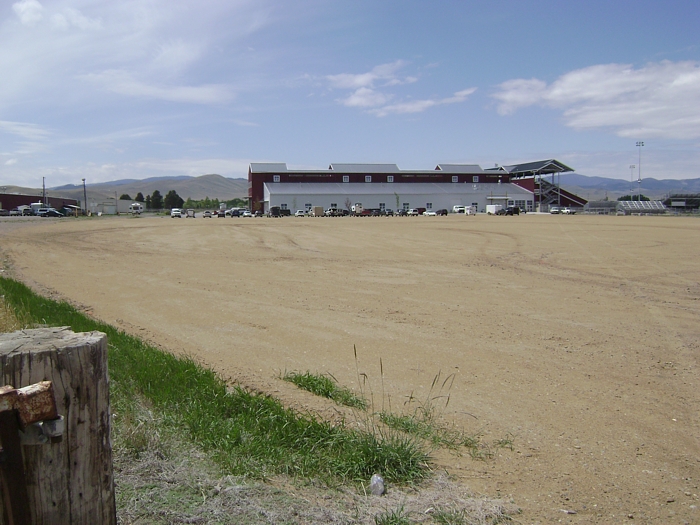
PHOTO
COURTESY OF ELLEN BAUMLER • CLICK ON IMAGE
TO OPEN A BIG VERSION IN A NEW WINDOW
The
First Turn, June 2012
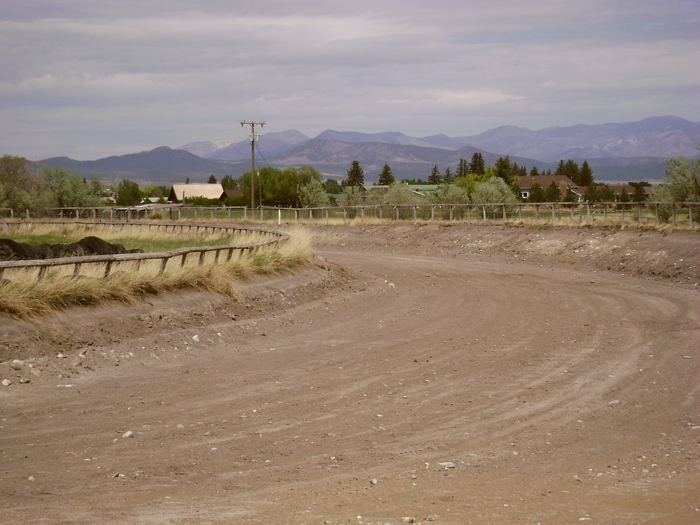
PHOTO
COURTESY OF ELLEN BAUMLER • CLICK ON IMAGE
TO OPEN A BIG VERSION IN A NEW WINDOW
Backstretch,
Looking East, June 2012
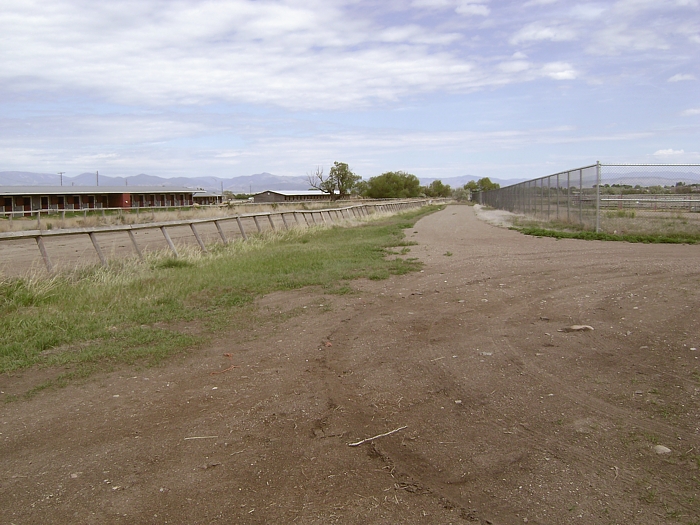
PHOTO
COURTESY OF ELLEN BAUMLER • CLICK ON IMAGE
TO OPEN A BIG VERSION IN A NEW WINDOW

Lost
Fairgrounds Structures
For more images of these structures, along with
maps showing their former
locations, please download part 2 of the Historic Sites Review, linked
to above.
The
First Grandstand, circa 1870 - 1906
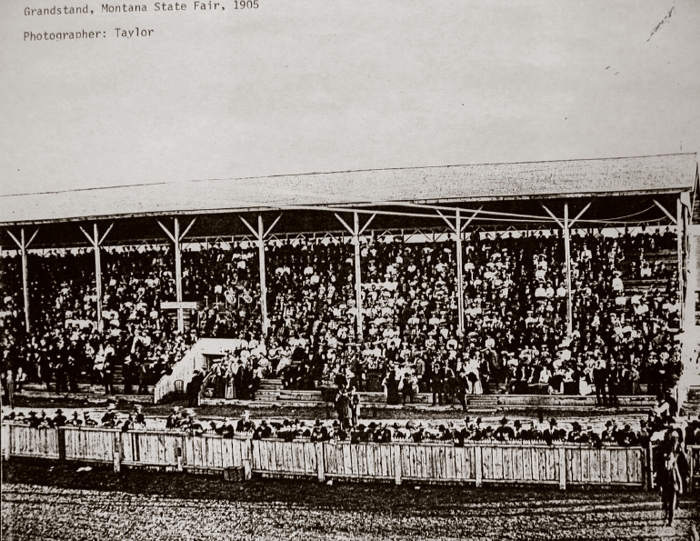
FROM
THE LEWIS & CLARK COUNTY FAIRGROUNDS HISTORIC SITES REVIEW
HELENA/LEWIS & CLARK COUNTY HISTORIC PRESERVATION COMMISSION
The Second Grandstand, 1906 - demolished 1999
260
feet long - 60 feet wide • seated 5,000 people
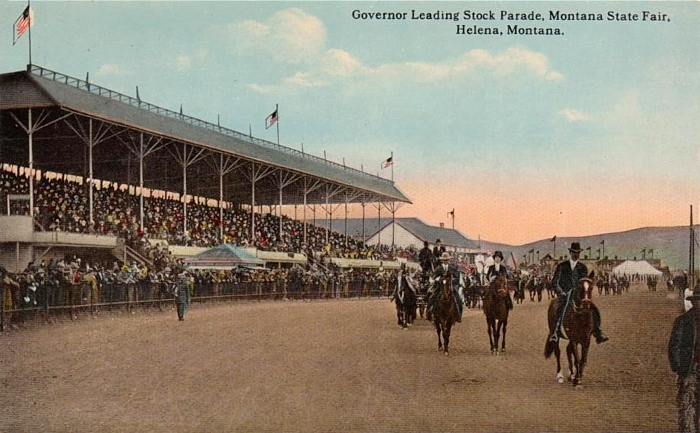
Exhibition Hall
Built in 1870, enlarged 1903-4, burned about 1923
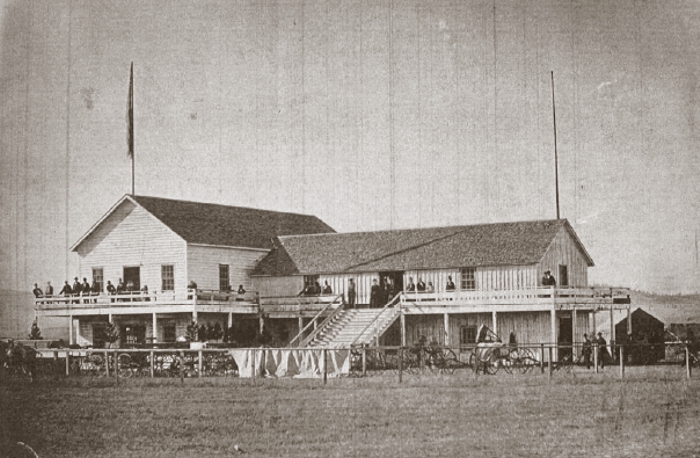
FROM
THE LEWIS & CLARK COUNTY FAIRGROUNDS HISTORIC SITES REVIEW
HELENA/LEWIS & CLARK COUNTY HISTORIC PRESERVATION COMMISSION
Towers
were added to the south side of the Exhibition Hall in 1904
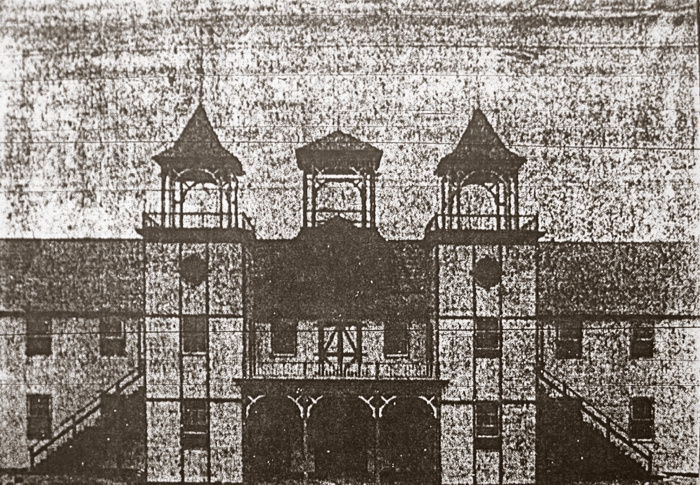
FROM
THE LEWIS & CLARK COUNTY FAIRGROUNDS HISTORIC SITES REVIEW
HELENA/LEWIS & CLARK COUNTY HISTORIC PRESERVATION COMMISSION
Horticultural Hall, 1914-1935 - destroyed by earthquakes
A man was killed by its collapse
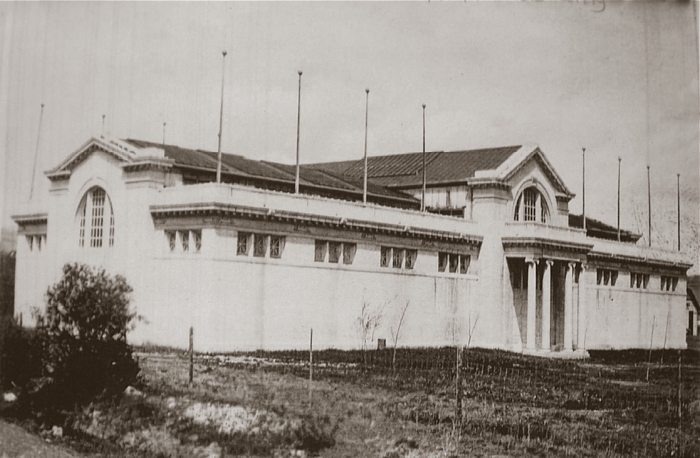
FROM
THE LEWIS & CLARK COUNTY FAIRGROUNDS HISTORIC SITES REVIEW
HELENA/LEWIS & CLARK COUNTY HISTORIC PRESERVATION COMMISSION
Telephone
Exchange, circa 1914 - circa 1950
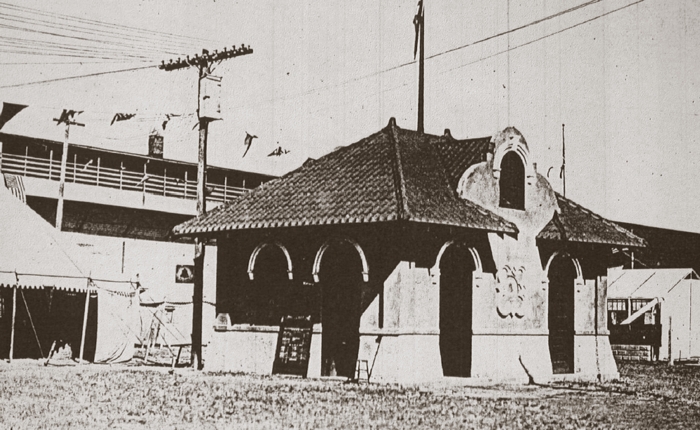
FROM
THE LEWIS & CLARK COUNTY FAIRGROUNDS HISTORIC SITES REVIEW
HELENA/LEWIS & CLARK COUNTY HISTORIC PRESERVATION COMMISSION
Fish
and Game Commission Aquarium, 1915 - circa 1960
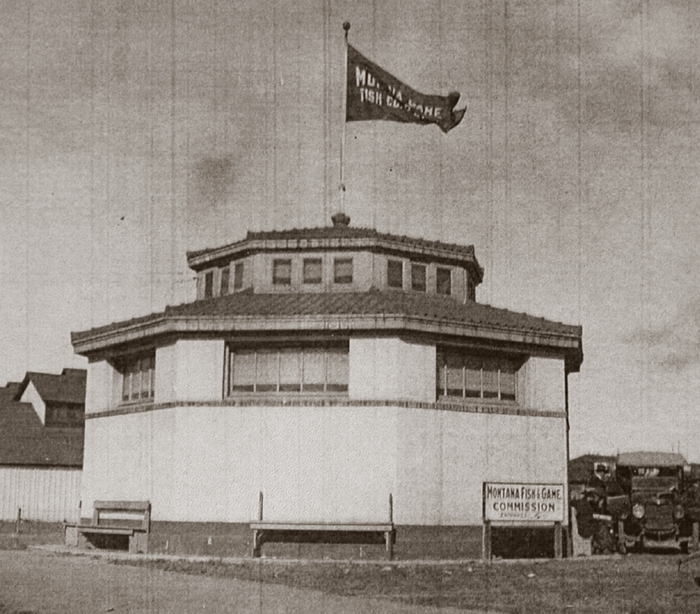
FROM
THE LEWIS & CLARK COUNTY FAIRGROUNDS HISTORIC SITES REVIEW
HELENA/LEWIS & CLARK COUNTY HISTORIC PRESERVATION COMMISSION
Dairy
Building, 1911 - circa 1960
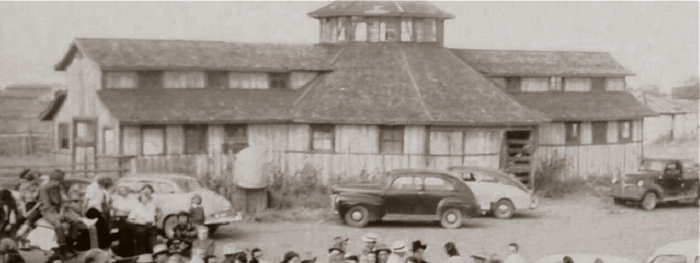
FROM
THE LEWIS & CLARK COUNTY FAIRGROUNDS HISTORIC SITES REVIEW
HELENA/LEWIS & CLARK COUNTY HISTORIC PRESERVATION COMMISSION
The
West Barns, 1924/1929 - 2011
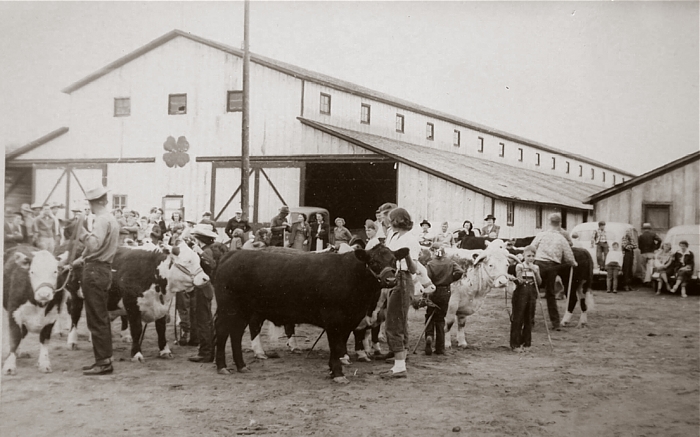
FROM
THE LEWIS & CLARK COUNTY FAIRGROUNDS HISTORIC SITES REVIEW
HELENA/LEWIS & CLARK COUNTY HISTORIC PRESERVATION COMMISSION
West
Barns Shortly Before Demolition, May 2011
Photos
courtesy of Kerry Brown
CLICK
ON IMAGE TO OPEN A LARGE VERSION IN A NEW WNDOW
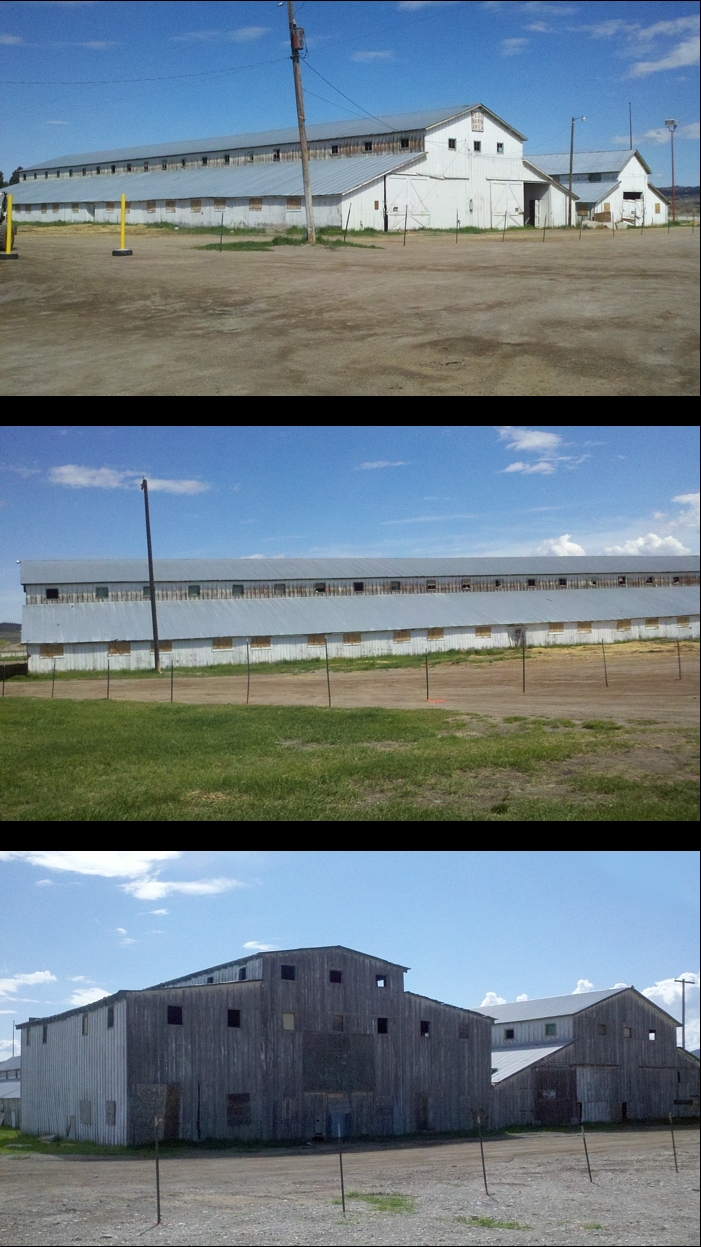
Interior
and Exterior Photos of the West Barns
A Powerpoint presentation created for the Historic
American Buildings Survey
Courtesy of Lewis & Clark County Historic Preservation Officer
Pam Attardo
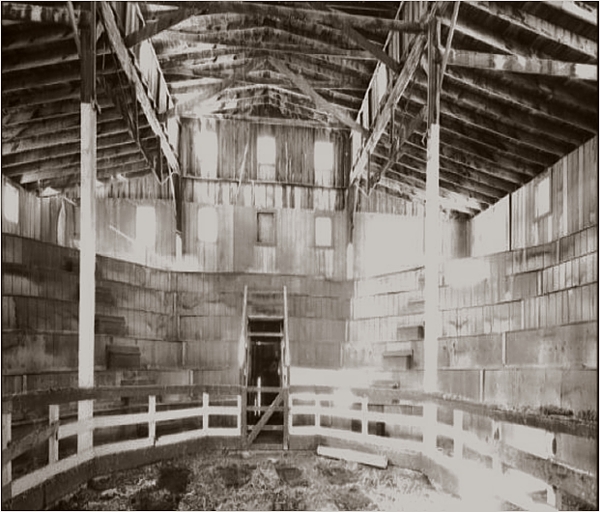
Click
on image to open Powerpoint presentation
Demolition
of the West Barns, 2011
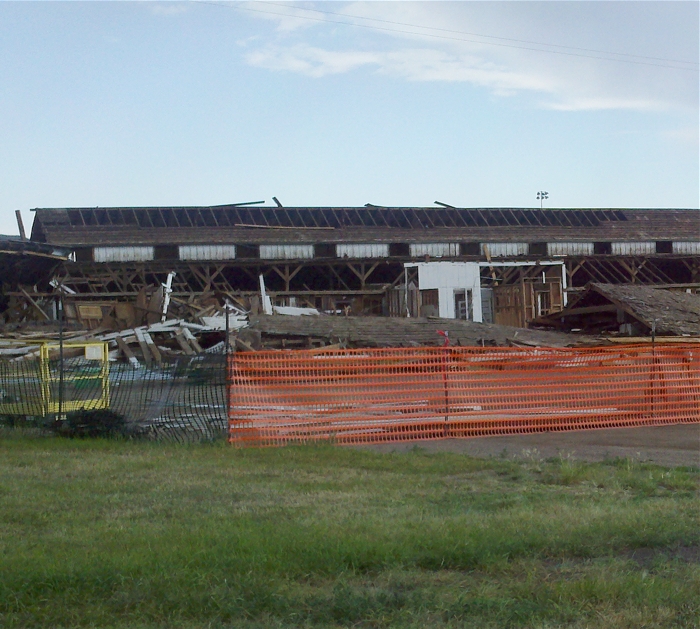
COURTESY
OF KERRY BROWN
Demolition
seen from Space...
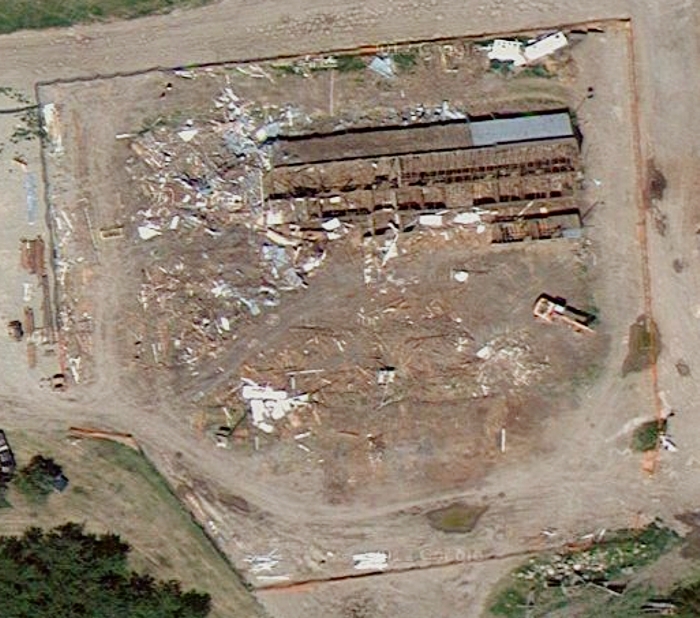

|




